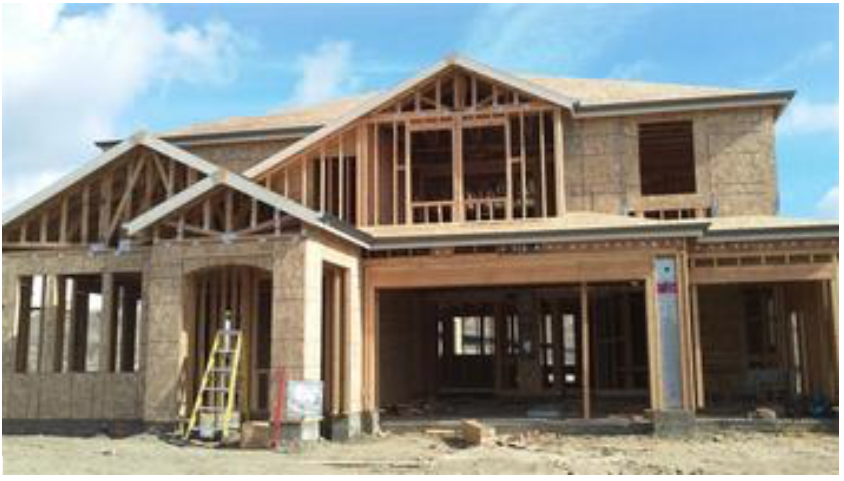CommentsNEW GEOGRAPHY--The people who build our homes increasingly can no longer afford them. As the state elite and their academic cheering crew celebrate our progressive boom, even the most skilled, unionized construction workers, notes an upcoming study, cannot afford to live anywhere close to the state’s major job centers.
In fact, notes the study, soon to be published by Chapman University, not a single unionized construction worker can afford a median-priced house in any of the major coastal counties, including Orange, Los Angeles, San Mateo, San Francisco, Santa Clara, San Diego, Alameda, Sonoma and Napa. Even with incomes averaging over $73,000 annually, notes author and economist Dr. John Husing, most can afford median-priced homes only in the further reaches of the Central Valley or the Inland Empire, requiring huge commutes.
This gap between blue collar and professional and entrepreneurial wages is even greater among the majority of construction workers who are not unionized. Husing suggests that most of these workers could only afford the cheapest starter house in the furthest reaches of exurbia and beyond.
California’s growth model
For many progressives and futurists, California’s growth model represents a beacon to a prosperous future. It’s repeatedly pointed out that California is now the world’s fifth-largest economy, largely the product of massive wealth concentrated in the Silicon Valley giants, as well as a much stronger dollar versus the pound and Euro, and sub-par growth throughout Europe.
To be sure, California came out of the recession with a robust recovery, paced by increased property values, a soaring stock market and, critically, huge growth in the Bay Area, which represents roughly 17 percent of the state’s population. Yet overall, California’s post-recession growth, according to the BLS, is now only marginally above the national average, and in many regions, notably Southern California, somewhat below. The contrast is greatest with our strongest rivals: California is now growing jobs at a rate 50 percent or more below the rate of Texas, Arizona and Nevada.
Even in the Bay Area, growth is slowing, particularly in the San Francisco-Oakland area where job growth has plummeted from nearly 5 percent in 2015 to less than 2 percent last year. The bulk of the job growth there now is at the low and high ends, leaving little in the middle. Nearly half of millennials in the Bay Area, according to a recent survey, plan to leave; since 2012 millennial outmigration from Los Angeles, as a new Brookings study reveals, lags only metro New York in exporting its youthful workers.
Future threats to the working class
The California economic model is based largely on income and capital gains accruing to a relatively small part of the population, one reason the state ranks second in inequality to New York, and is becoming ever more unequal. To be sure, the new wealth has driven housing demand, largely for expensive new homes and apartments, but overall construction employment remains considerably below its 2007 levels. Growth in the sector has actually fallen from 2013, and now lags well behind the rate enjoyed in Nevada, Arizona, Florida and Texas.
Other key blue collar sectors such as manufacturing have also under-performed national average. The sector is now growing at one quarter the national rate, a shortfall exacerbated by state climate policies that have increased both energy costs and imposed ever more rigid regulatory burdens that encourage producers to move to other locales.
How sustainable is the “California Model”?
If the rest of the country wants to adopt the “California model,” it should be aware of what this means for the middle and working classes. The likely further acceleration of our state’s tougher climate regulation polices, as well as the prospect of more taxes on things like soda, guns and tires may please our green gentry and the oligarchs, but inevitably will hurt job prospects and raise the cost of living for most California workers.
Pushing our construction workers to the far fringes, particularly as state policy seeks to concentrate employment in expensive core cities, makes it less likely that new workers will enter the labor pool necessary to address our housing shortage. With residential sales dropping across the state, and California’s rate of new housing permits per new resident roughly half the national average, the prospects facing construction workers may be dimmer than necessary.
State measures to encourage the creation of subsidized housing could help some, but in reality would make only a tiny dent in the problem. Increasingly the political class focuses not on expanding the land for development, or bringing jobs to the more affordable interior, but on mandating subsidies, set-asides and rent control. Some, including certain oligarchs, suggest offering regular cash outlays so working people can subsist but never enter the property-owning classes.
Having sought accommodation with the green, anti-suburban regulators, both developers and labor need to recognize that it’s time to challenge a policy agenda harmful to the prospects both of business and most working Californians. Rather than doubling down on policies that reinforce our state’s descent into feudalism, we need to forge a new agenda that encourages instead broad economic growth and greater opportunity.
(Joel Kotkin is the R.C. Hobbs Presidential Fellow in Urban Futures at Chapman University in Orange and executive director of the Houston-based Center for Opportunity Urbanism. He is an occasional contributor to CityWatch. This piece appeared most recently in New Geography.)
-cw
















